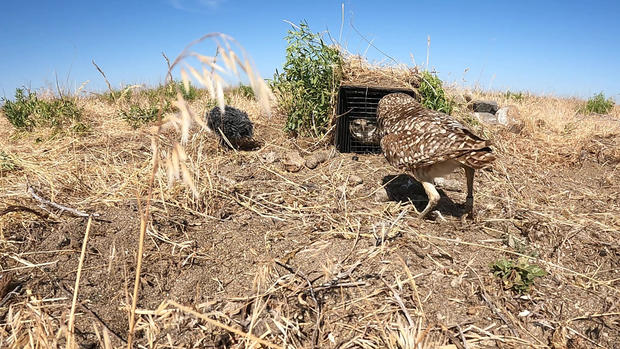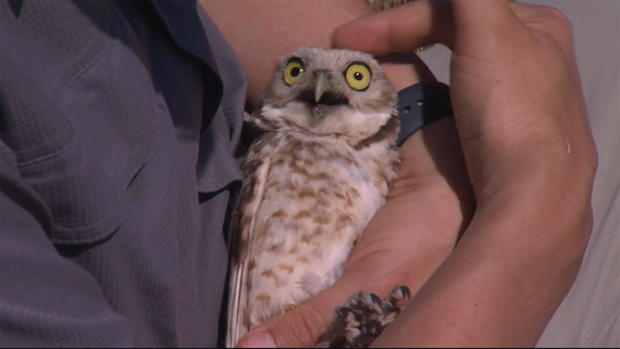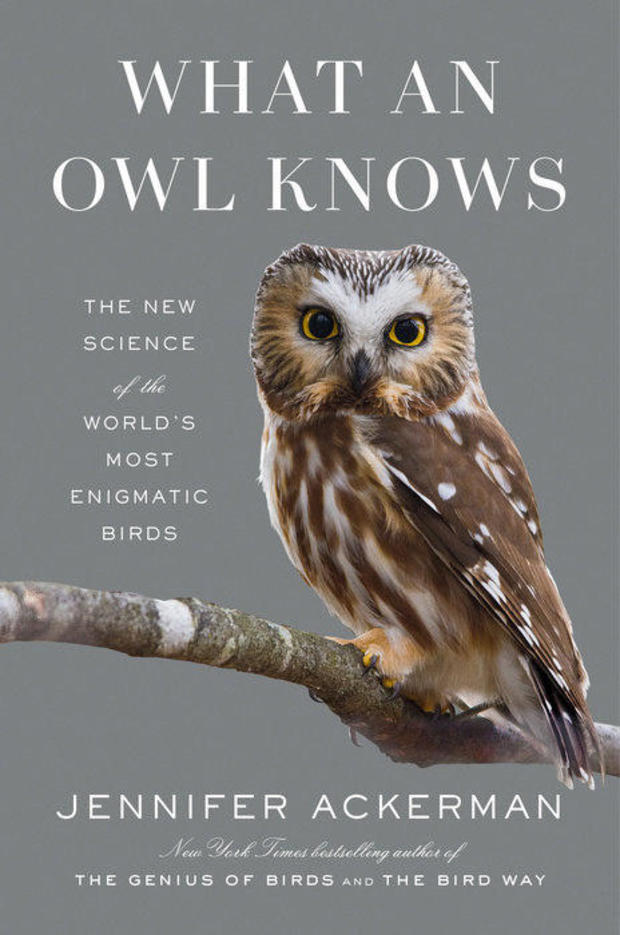The secret world of owls
Near Hermiston, Oregon is a sprawling site that was once an active Army depot. Built in 1941, it eventually became known as the Umatilla Chemical Depot. Deadly agents like sarin gas were housed in rows of concrete bunkers you can still see from the air.
But you have to be at ground level to notice all of the burrows. This land is now home to around 50 pairs of burrowing owls.
"They have to have burrows for protection for nesting," said David H. Johnson. "Their life revolves around burrows."
And Johnson's life revolves around owls. He claims he didn't have much say in the matter. "I didn't pick owls; they picked me," he said.
When Johnson was just 11 years old, an eastern screech owl landed on the edge of his tent, and he was captivated. Today, he's the director of the Global Owl Project.
Johnson said, "There are two important days in your life: the day you're born, and the day you find out why. I know why. I'm here to help owls, conservation of the planet, and the people that I care about."
Unlike most owl species which nest in trees, burrowing owls live underground, often in holes left behind by other creatures, like badgers or prairie dogs. Or humans. To restore this land's dwindling owl population, Johnson has been creating and installing artificial burrows here since 2008. It's given him an opportunity to study the owls – banding them, recording their vocalizations, and tracking migration with small locator devices.
Author Jennifer Ackerman included Johnson's research in her new book, "What an Owl Knows." "The science of owls is just vast and fascinating," she said. "We've been studying these birds for a very long time, but it's really only recently that we've had the kind of advances in technology, the breakthroughs that have allowed us to solve some of the mysteries that have been around for centuries."
Knighton met up with Ackerman at an "owl prowl" in Indiana, where owl enthusiasts spend an evening wandering around in the darkness looking – and listening – for the elusive creatures. "It's this combination of the strange and the familiar that I think makes people just obsess about owls," Ackerman said. "We have been obsessing as a species about owls for tens of thousands of years."
More than 30,000 years ago, an owl portrait was scratched into the wall of France's Chauvet-Pont d'Arc Cave. More recently, owls have popped up in everything from Tootsie Pop commercials to Harry Potter.
Johnson said, "Humans have a great imagination. We project on owls in all kinds of different ways. You know, 'Someone is gonna get sick or die, or they have wisdom.' They're just owls, and they're doing what they do best."
For the past decade, Johnson has been studying how cultures all across the world view owls. Are they wise spirits? Or eerie messengers of death? Through the Global Owl Project, his team has conducted around 6,000 interviews in 28 countries, talking to residents about their beliefs, and documenting examples of owl imagery.
"Owls are mysterious," Johnson said. "When you see an owl, you realize the owl has been watching you for quite a while already. And it kind of gives you the heebie-jeebies because like, you know, I'm just seeing this now, and it's been watching you the whole time? So, that scares some people."
For Andrew Wildbill, wildlife manager for the Confederated Tribes of the Umatilla Indian Reservation, the burrowing owls hold a special significance: "These burrowing owls are highly important to our tribal culture. And we recognize them as being a very important animal in this ecosystem."
The Army recently transferred thousands of acres of the former depot back to the tribes. The owls are thriving once again on this site, and Johnson is handing off his research project to the tribes as well. He's fighting stage four colon cancer, and needs to focus on his treatment.
But he's going to keep fighting for owls. There are more than 260 species found all across the globe,
"I wish I could do as much as I could for everything on Earth; I can't," Johnson said. "What I can do is, I can help owls. I'm gonna work with owls until my last breath."
READ AN EXCERPT: "What an Owl Knows" by Jennifer Ackerman
For more info:
- Global Owl Project (Facebook)
- "What an Owl Knows: The New Science of the World's Most Enigmatic Birds" by Jennifer Ackerman (Penguin Press), in Hardcover, eBook and Audio formats, available via Amazon, Barnes & Noble and Bookshop.org
- Author Jennifer Ackerman
- Confederated Tribes of the Umatilla Indian Reservation
Story produced by David Rothman. Editor: George Pozderec.






